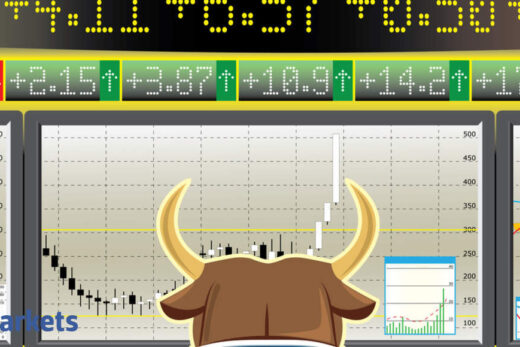Shares of banks, energy firms and other companies that tend to be sensitive to the economy’s fluctuations have tumbled following the Federal Reserve’s meeting on Wednesday, when the central bank surprised investors by anticipating two quarter-percentage-point rate increases in 2023 amid a recent surge in inflation.
The Russell 1000 Value Stock Index is down 4% from its June peak, though still up 13.2% this year. Its growth counterpart is up 9.1% year-to-date.
One factor driving the move is the idea that a Fed more strongly focused on preventing the economy from overheating may begin unwinding easy-money policies sooner than previously expected. On Friday, St. Louis Federal Reserve President James Bullard said the central bank’s shift was a “natural” response to economic growth and inflation moving quicker than expected, bolstering that view.
“Value stocks had gotten ahead of themselves, particularly in energy and financials, and the folks that are caught offsides are starting to unwind those trades,” said Jamie Cox, managing partner at Harris Financial Group.
The post-Fed meeting slide in value has been accompanied by a retreat in some commodity prices, a surge in the dollar and a rally in U.S. government bonds that dragged down yields on the benchmark U.S. Treasury to around 1.44% on Friday afternoon.
Investors will be keeping a close eye on next week’s economic data for clues on whether the recent surge in inflation — which saw consumer prices accelerate at their fastest pace in 12 years last month — will persist.
New home sales and mortgage applications are due out June 23, while May consumer spending numbers are expected on June 25.
Investors piled into value stocks in the latter half of 2020, as signs of breakthroughs in vaccines against COVID-19 bolstered the case for a powerful economic rebound in 2021. Value stocks have outperformed growth stocks by nearly 7 percentage points since the start of November 2020, bucking a trend that saw technology and other growth sectors regularly outshine value over the last decade.
An unwinding of the heavy positioning in value shares could exacerbate the recent slide. Mutual funds are overweight value names to a larger degree than any time in the last eight years, according to a Goldman Sachs report published on June 9.
Some big-name investors such as Cathie Wood, whose ARK Innovation ETF was the top-performing U.S. equity fund last year, have suggested that growth stocks will resume their market outperformance as investors rotate away from value sectors such as energy that are up 38.5% since the start of the year. Wood’s flagship ETF is down 4.8% year-to-date.
Others, however, believe the recent wobble in value stocks is a pause, rather than a turning point.
Cyclical companies remain the least over-valued in the U.S. stock market, according to Jonathan Golub, chief U.S. equity strategist at Credit Suisse. High sales-growth companies are trading at valuations nearly double their 10-year averages, while cyclical companies are trading at valuations approximately 40% more than their historical levels, he wrote in a research note.
The prospect of rising interest rates should also benefit higher quality value stock names that held up better in last year’s downturn but have lagged during the recovery, said John Mowrey, chief investment officer at NFJ Investment Group.
He has been increasing his positions in utility and consumer staples stocks that have underperformed value stocks as a whole, betting that they will increase their dividend payouts, which would make them more attractive even if Treasury yields eventually rise.
Among his holdings are consumer companies Church & Dwight Co , which is down 4% for the year to date, and McCormick & Company Inc, which is down 9.7% for the year to date. “The idea of dividend growth has been largely sidelined because we’ve all been enjoying stock appreciation,” he said. “We think this will be the next leg of the value stock rally.”



